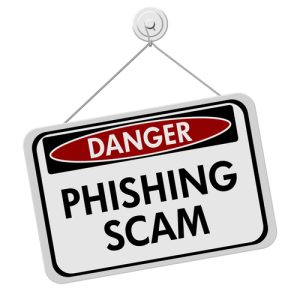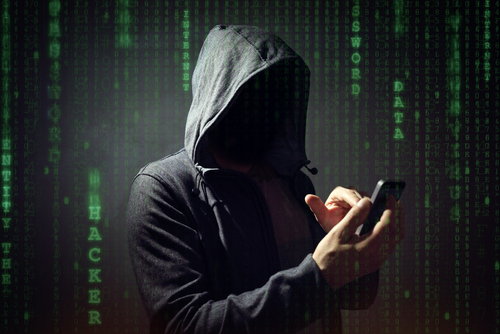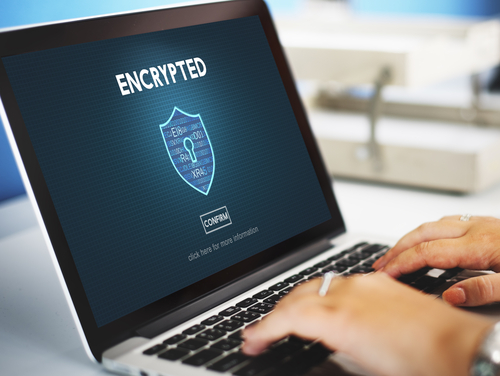An example of phishing is when someone impersonates a company or individual you trust and sends an email that provides a link. This link takes you to an insecure site that prompts you to provide confidential information.
Phishing attacks can take many forms, and cyber criminals get cleverer every year with these scams. So, how can someone protect themselves against phishing? Anti-phishing is the process of combining human practices with software to protect users against phishing attacks
Read on to learn about how anti-phishing software works and how you can improve your email practices to protect you from these scams.

What is Anti-Phishing?
According to the APWG Phishing Activity Trends Report, more than 4.7 million phishing attacks happened in 2022, a record number. Phishing became especially problematic for the financial sector with a staggering 27.7% of all phishing attacks occurring within it.
If you own a business, you are looking for a way to protect your company from these attacks. So, what is anti-phishing and how does it work? Anti-phishing is a term used for the combination of human practices and software processes that prevent and lessen phishing attacks.
This can take the form of anti-malware and antivirus programs, filters, and website blocking. These anti-phishing programs attempt to identify phishing content in emails, websites, and apps. Then, they quarantine these items. For example, many email hosts have a spam folder, where many of these phishing emails are sent.
Anti-phishing programs will alert you if you access a dangerous site. They may also display a pop-up at the top of your browser to let you know when something is unsafe. Sometimes, the software will automatically redirect you instead of letting you access a phishing site. Others will give you the option to continue forward or to leave.
Programs with anti-malware and anti-virus protections also scan the content of emails and websites for harmful bugs. They then block these to protect you against these cyber threats.
Types of Anti-Phishing Solutions
As you work to establish phishing protection for your business, there are some diverse types of anti-phishing tools available to choose from.
- Email Scanner: This type uses machine learning and signatures to identify malicious content. With around 16.5 leaked emails per 100 internet users as of 2021, this seems like a sound investment.
- Sandboxed Execution: Since not all malware can be detected, this program puts suspicious files in a folder and monitors their behavior for malicious activity.
- Content Disarm and Reconstruction (CDR): Microsoft Office documents and other file types sent by phishers can deliver malware. CDRs take a document, remove the malicious content, and provide you with a safe version upon arrival to your inbox.
- Endpoint Security: These programs aid in identifying and fixing malware infections sent to your device through a phishing attack.
- Mobile Security: This is an anti-phishing program that helps detect and remove potential threats from your mobile device.
10 Ways To Protect Against Phishing Attacks
We have compiled 10 ways for you to protect yourself and your company from cyberattacks. These solutions include practices you and your employees can implement to beef up your cybersecurity as well as programs that you need to include on your computers and networks to ensure the best real-time protection. Identifying your company’s vulnerabilities will help you to prevent data loss.
#1 Understand the Types of Phishing Attacks
There are several phishing techniques that hackers use:
- Spear phishing: Targeting a specific individual in an organization to steal their login credentials.
- Whaling: Targeting an executive-level employee at major companies to steal their login credentials for a more lucrative scam.
- Email phishing: This is the typical scheme where an email is from a trusted source but contains links that compromise confidential information. Business Email Compromise (BEC) costs companies thousands of dollars each year.
- Vishing: Voice fishing is a call that claims to be from a representative of a big company, such as Microsoft, with a fake crisis and asks for your login credentials.
- Pharming: Malicious code is installed on your computer that sends you to a fake website where you are prompted to give up your login credentials.
- Pop-up phishing: With this type, you will get bombarded by pop-ups saying your device has been infected, but it is just a scam that once you click on the pop-up, you’ll be directed to download a file that turns out to be malware.
- Image Phishing: Images have malicious files attached to them that a hacker uses to steal your information or infect your computer.
- Smishing: When a hacker sends a phishing link through a text message or SMS.
- Watering Hole Phishing: Phishers target a site a large group of users typically visit and use to infect users’ computers.
- Evil Twin Phishing: A hacker sets up a false Wi-Fi network that steals sensitive information once you log into it.
- Spoofing: A cybercriminal imitates a website or domain name to lure people into giving out their sensitive data.
- Social Media: This is when cybercriminals impersonate someone to trick you into sharing sensitive information.
There are many other types of phishing and social engineering scams out there. Hackers get more creative each year. Understanding the ways, a cybercriminal tricks its victims can help you and your employees be on the lookout for scams when using the internet.
Being aware of what a suspicious email looks like can help you to avoid getting attacked.
#2 Identify the Signs of a Phishing Email
The most common phishing attempts happen through emails. Installing good anti-phishing software and having filters in place on your email will catch many of the scams, but still, some impersonations are so good they come through.
When you receive an email, check the sender’s email address. Often, they will try to mimic an email address that you are familiar with. They may also try to impersonate a domain that you frequently use. If you didn’t initiate the conversation, this can also be suspicious.
Next, check for an unfamiliar greeting. Often phishers use language that isn’t quite right. Spelling and grammar errors are also another tell-tale sign of a malicious email. Also, if the email is encouraging urgency over an immediate danger, this is usually a red flag.
Unsolicited attachments and unfamiliar extensions can be signs of malware. Be on the lookout for files that end in .zip, .exe, .scr, and the like. Any emails that request login credentials, credit card information, or other personal details warrant verification. Make sure to double-check the sender before providing any of this information.
Many phishing messages are also incredibly short and to the point. They will request you to do something that is out of the norm between you and the sender. If you are receiving a suspicious email, make sure to report it to the sender and avoid opening any links or further communicating with the sender
#3 Don’t Click on Unfamiliar Links or Attachment
Phishers often send emails that contain malicious links to complete tasks, such as resetting a password or unlocking a special offer. These often lead you to phishing sites that further steal your information. Always be wary about downloading unfamiliar attachments or clicking links. A good anti-phishing program can help scan incoming emails and notify you of any security threats.
#4 Block Popups and Ads
Enabling your popup and ad blocker on your web browser can prevent you from being a victim of pop-up phishing. Usually, pop-ups and ad blockers are on the advanced settings of your web browser. You can enable these blockers on your computers, tablets, and phones.
#5 End-to-end Encryption
End-to-end encryption (E2E) is the latest encryption protocol that provides the best protection against cyber threats. If you have an email client that practices E2E, they take your email contents and scramble them in a plain text file before the email is delivered. Then, the content remains encrypted during transit and can only be decoded upon arrival at its destination.
The email content is then unlocked by the recipient using a private key. This helps to secure confidential data throughout the entire process of sending an email. End-to-end encryption also often removes malicious content before it is sent to you, offering both you and your clients excellent security against potential threats
#6 Authorize Email Sources
Phishers can impersonate people inside of an organization or from other trusted entities that your business often communicates with. To ensure that emails are coming from the source they claim to be, you can use email authentication methods such as DMARC, DKIM, and SPF. These methods use a Domain Name System (DNS) to verify email senders and reduce the number of phishing emails.
#7 Enable Multi-Factor Authentication (MFA)
Another way to secure your email is by authorizing multi-factor authentication. When you enable this feature, you will receive a one-time passcode after you input your username and password credentials. This passcode will be sent to another device you have.
Although this seems like extra work, it is well worth the effort because cybercriminals who have gained access to your login information will be thwarted when it comes to authenticating their identity. MFA goes a long way in preventing phishing from being successful.

#8 Add Anti-virus Protection
Anti-virus protection can help you to ward off malicious content. These programs are designed to prevent, detect, and search for viruses. Once they have found them, they remove them from computers, networks, or other devices. You can either purchase stand-alone or as part of a security package
#9 Install Anti-Phishing Software
Of course, using anti-phishing software can help to prevent cyberattacks. You can purchase it as hardware, software, or a cloud-based service to work with your existing computer, network, and other devices. There are many anti-phishing software available. They are usually packaged as part of a security package that includes anti-virus and anti-malware protections.
Popular anti-phishing providers include the following:
- LayerX
- ManageEngine DLP Plus
- SlashNext
- Talon
- Island
- Perception Point
- IronScales
- Avanon
- Abnormal
- Proofpoint
- Mimecast
- EarthLink
- SpoofGuard
- NetCraft
Some anti-phishing software is better than others. Make sure to fully research and find reviews for different software before committing to one. Many consider Microsoft Windows Internet Explorer the best anti-phishing program on the market.
Some browsers already possess some anti-phishing protection. Firefox and Chrome already have Google Safe Browsing enabled to help minimize phishing attacks.
#10 Educate Employees
One of the best email security solutions is to provide your employees with phishing awareness training. Once they are educated about what phishing looks like and how they can avoid it, you will see some positive impacts on your business. Phishing is often used as an initial access vector.
Even if a simple phishing scam does not steal your money or valuable information, it can lead to costly and damaging viruses and malware, such as ransomware, installed on your computers. Educated employees will avoid more of these scams and save you time, money, and stress.
How Sekur Protects You Against Phishing Attacks
Sekur can help you to ward off phishers with our SekurMail. We allow you to send encrypted emails outside of Sekur and have the recipient reply within our environment. All communications are secured on our Swiss server. You can also send unlimited-size attachments and monitor your email activity.
We also provide a secure VPN that gives you a Swiss IP address. We use our latest encryption technology to protect your data in a multi-layered 2048-bit encrypted tunnel. Our proprietary technology is easy to use and set up, so you can securely send and receive emails through our military-grade encrypted network.
For even more communication security, you can try out SekurMessenger, which is a fully private instant chat where you can have encrypted chats with non-Sekur users.
Regain your privacy. Start a 7-day trial.
Conclusion
Phishing is a problem most businesses and individuals must face today, but there are ways you can protect yourself against these cybercriminals. Anti-phishing software paired with best practices can give you back a secure email environment. Remember to be wary and double-check before you click any links.

